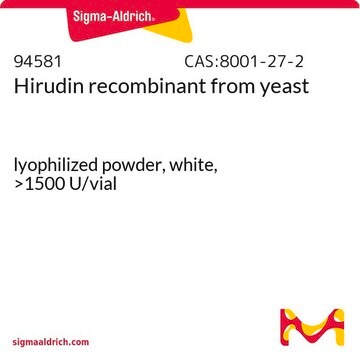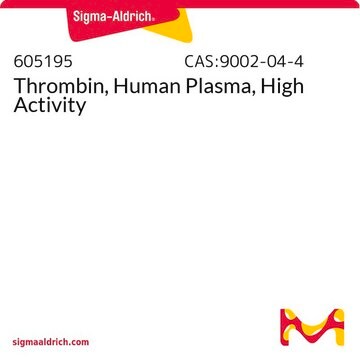H0393
Hirudin
recombinant, expressed in unspecified host, ≥7,000 ATU/mg protein, powder
About This Item
Recommended Products
product name
Hirudin, recombinant, expressed in unspecified host, ≥7,000 ATU/mg protein (ATU = antithrombin units)
recombinant
expressed in unspecified host
Quality Level
form
powder
specific activity
≥7,000 ATU/mg protein (ATU = antithrombin units)
mol wt
~7 kDa
solubility
pyridine: soluble
water: soluble
shipped in
dry ice
storage temp.
−20°C
Looking for similar products? Visit Product Comparison Guide
Application
Physical properties
Unit Definition
Reconstitution
Analysis Note
Storage Class Code
11 - Combustible Solids
WGK
WGK 3
Flash Point(F)
Not applicable
Flash Point(C)
Not applicable
Personal Protective Equipment
Certificates of Analysis (COA)
Search for Certificates of Analysis (COA) by entering the products Lot/Batch Number. Lot and Batch Numbers can be found on a product’s label following the words ‘Lot’ or ‘Batch’.
Already Own This Product?
Find documentation for the products that you have recently purchased in the Document Library.
Customers Also Viewed
Our team of scientists has experience in all areas of research including Life Science, Material Science, Chemical Synthesis, Chromatography, Analytical and many others.
Contact Technical Service












